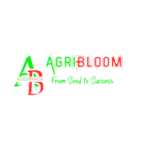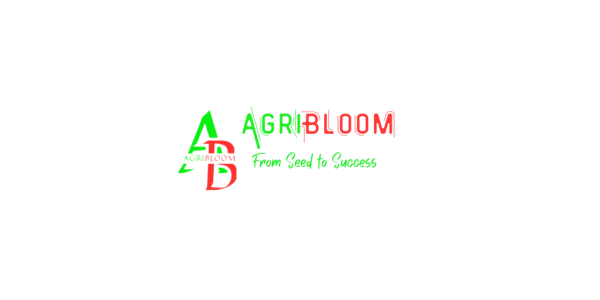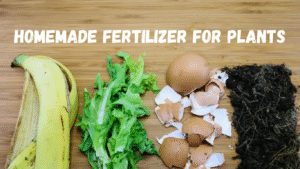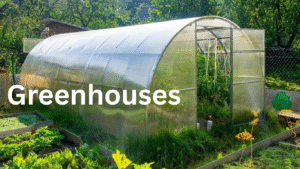Garden Tools Name List: Wheelbarrow, Soil Knife, and More
When it comes to gardening, it’s not just about green thumbs—it’s about having the right tools to make the process smoother and way more enjoyable. Whether you’re growing tomatoes on your balcony, tending to a lush flower bed, or just trying to keep weeds from taking over your yard, the right garden tools can make all the difference. But with so many garden tools out there, how do you know which ones you actually need? Let’s take a simple, practical look at the essential garden tools name list and what they’re used for.
Grab a cup of tea and let’s get started.
A. Garden Tools Name List: Hand Tools You Actually Need
Gardening isn’t just about plants—it’s about having the right tools to help you get the job done without losing your patience or your back. Over the years, I’ve tried all sorts of gadgets. Some were lifesavers, some were… well, glorified spoons.
Here’s my honest, experience backed list of essential hand tools you should have in your garden shed, toolbox, or even tucked behind the door.
1. Trowel
For Digging, Planting, and Scooping Without a Backache


What it is:
Think of a trowel as your go to gardening spoon. It’s a small, curved metal tool that lets you dig planting holes, scoop compost, transplant seedlings, or even scrape off dried mud from your shoes.
Real life tip:
I once planted over 50 marigold seedlings with a trowel that had a rubber grip. My friend used a metal handled one—guess who ended the day with blisters? Get one with an ergonomic handle. Your fingers will thank you.
Best for:
- Planting herbs and flowers
- Scooping soil into pots
- Removing weeds from tight spots
According to the Royal Horticultural Society (RHS), a well designed trowel reduces wrist strain and increases planting efficiency.
2. Pruners
For Snipping, Trimming, and Feeling Like a Plant Surgeon


What it is:
These sharp little hand shears are essential for pruning dead stems, cutting back overgrowth, and keeping your plants neat. There are two main types: bypass pruners like scissors and anvil pruners one blade crushes onto a flat surface.
My story:
I once tried pruning a bougainvillea with regular kitchen scissors. Bad move. Thorns, tears, and dull blades everywhere. After switching to a solid pair of bypass pruners, pruning became… almost fun.
Look for:
- Locking mechanism for safety
- Replaceable blades
- Non slip grip
The University of Minnesota Extension recommends using bypass pruners for most gardening tasks due to cleaner cuts and less plant damage.
3. Hand Fork
For Breaking Soil and Mixing In the Good Stuff


What it is:
It looks like a mini pitchfork, and it works like one too. A hand fork is brilliant for loosening compacted soil, mixing in compost or fertilizer, and even helping you remove deep rooted weeds.
From my backyard:
In the monsoon season, my raised beds get clumped like wet cake. A hand fork is what I use to fluff things up before planting. Way better than trying to jab through clay soil with a spade.
Pro tip:
Stainless steel tines don’t rust and last longer. Wooden handles feel better in hot climates.
Research from Oregon State University suggests loosening soil before planting boosts root development and crop yield.
4. Weeder
Your Secret Weapon Against Unwanted Guests


What it is:
A narrow, pointed tool with a forked end that slides under a weed’s root system and pops it out. A good weeder helps you remove dandelions, crabgrass, and invaders without ruining your garden beds.
True story:
Once, I spent a whole weekend hand pulling weeds. My knees hurt, my back ached, and half of them grew back. The following week, I picked up a hand weeder—what took 5 hours before now takes 30 minutes. No exaggeration.
What to look for:
- A V shaped notch to grip weed roots
- Strong steel shaft especially for stubborn weeds
- Comfort grip if you have many beds to clean
According to Penn State Extension, removing the entire root system is critical to prevent weed regrowth—and that’s exactly what a hand weeder helps with.
B. Garden Tools Name List: Long Handled Tools You’ll Actually Use
My honest take after years of working with clay, compost, and calluses
When I first started gardening, I had this tiny dream of growing fresh spinach and maybe a few tomatoes in the backyard. What I didn’t expect was how much harder everything becomes without the proper tools. Especially the long handled ones.
I thought, “A shovel and a stick should be enough, right?”
Wrong.
In this article, I’m not listing fancy gadgets. These are the four basic long handled tools that truly helped me build real, thriving garden beds—and saved my back while doing it.
1. Shovel
What I learned digging tree pits with a borrowed shovel
A shovel might seem obvious, but trust me—it’s more than a dirt mover. Whether you’re planting banana trees or shifting cow dung from one end of your garden to another, a good, sharp shovel can make all the difference.

Real life moment:
Two years ago, I planted a guava sapling on clay soil. I had a cheap, flimsy shovel from a discount store. Midway through the hole, the handle cracked, and I had to borrow my uncle’s old forged steel one. It felt heavy, yes—but it slid through that stubborn clay like slicing a ripe mango.
Pro tips:
- Use your foot to press down on the edge when the soil is tough
- Choose forged steel if you want it to last more than one season
- Round point shovels are better for digging; square ones for edging beds
According to Colorado State University Extension, using the correct shovel size and weight reduces fatigue and increases productivity.
2. Hoe – The Real Soil Whisperer
Why my vegetable patch owes its life to a $7 hoe
I used to think hoes were outdated. That changed the day I tried making my first raised bed without one. The soil had a thick, dry crust. My trowel couldn’t do a thing. So I picked up a draw hoe from a roadside nursery.
With each scrape, the soil loosened, and I felt the bed come alive. I’ve since used that same hoe to weed, dig, and reshape garden rows over and over.

What it’s good for:
- Removing weeds by slicing just under the surface
- Creating planting rows or furrows
- Loosening crusty topsoil
Research from the University of Arkansas Extension shows that hoes are one of the most energy efficient tools for small scale cultivation and weed management.
3. Rake – Your Garden’s Clean Up Crew
One windy day taught me what a rake is really for
You know those days when the wind covers your yard in dry leaves just after you cleaned it? I had one of those last fall. I tried to sweep it all with a broom. Terrible idea. After 30 minutes of frustration, I bought a leaf rake with flexible tines. Game changer.

There are two kinds you’ll want:
- Leaf rake: wide, flexible, perfect for dry leaves and grass
- Garden rake (bow rake): short, stiff tines for leveling soil, spreading mulch
My story:
I once leveled a 4 ft x 8 ft garden bed with a garden rake after composting. It helped spread the material evenly without disturbing the soil too deeply.
According to Washington State University Extension, regular raking improves air flow in garden beds and reduces fungal buildup under mulch.
4. Garden Fork – The Composter’s Best Friend
Turning hot compost without this tool? Never again.
The first time I built a compost pile, I didn’t have a garden fork. I used a shovel. It was a bad idea. The wet materials stuck to the blade. The dry layers clumped. Worst of all—I could barely lift anything. A friend gave me a garden fork, and from that point on, composting got 10x easier.

Why it’s essential:
- Loosens heavy or compacted soil without flipping it
- Lifts and turns compost or manure evenly
- Helps with harvesting root crops like potatoes or sweet potatoes
Tip:
Look for steel tines and a D grip handle if you want more control.
Cornell University’s research supports using forks for better soil aeration in no till systems and composting.
C. Garden Tools Name List: For Watering Your Green Friends
Let’s talk about watering. Sounds simple, right? You pour water, the plant drinks, everyone’s happy. But anyone who has actually tried to keep plants alive—especially during a hot summer or inside a dry apartment—knows that watering is both an art and a science. And for that, you need the right tools. So, here’s a list of must have garden tools that make watering easier, smarter, and maybe even a little fun.
1. Watering Can
Good old fashioned control at your fingertips
What It Is
A watering can is exactly what it sounds like: a container with a handle and a spout, designed to deliver water to plants in a gentle, targeted way. Some have long spouts, some short. Some have rosettes those sprinkly nozzles, others just pour like a pitcher.


Real Life Note
I still have my grandmother’s old metal watering can. It’s dented and rusted in places, but it works like a charm. She used it every morning for her herbs, especially the mint she swore made the best tea. And you know what? She was right.
Why It Matters
This tool gives you total control—perfect for seedlings, potted plants, or delicate flowers. If you’re someone who waters with care and intention, this is your go to.
Research Insight
According to the Royal Horticultural Society, watering cans help prevent overwatering and allow for precise delivery, especially important for indoor plants and raised beds.
2. Garden Hose
When the can isn’t enough, bring out the big guy
What It Is
A flexible tube that connects to a water source, usually a tap, and lets you water large areas quickly. Garden hoses can be basic, or they can come with adjustable spray nozzles to switch between mist, shower, jet, and more.


Real Life Note
When I moved into a house with a backyard, I thought I could get by with a watering can. That lasted about three days. One dry week in June and I was hauling the hose across the lawn like a firefighter. Lesson learned: for anything bigger than a few pots, a hose is a must.
Why It Matters
It’s efficient for lawns, flower beds, and vegetable patches. A hose with a nozzle attachment can mimic rain or provide a direct stream, depending on what you need. Plus, they’re good for cleaning garden tools or muddy patios.
Research Insight
The University of California Agriculture and Natural Resources division recommends using a hose with a watering wand or adjustable nozzle to reduce water waste and better target roots—where the moisture is actually needed.
3. Sprinkler System
For the set it and forget it type of gardener
What It Is
A mechanical system can be portable or built in that distributes water across your garden, lawn, or field in a timed and even way. Some rotate, some pulse, and some pop up from underground.


Real Life Note
My neighbor, Mr. Anwar, is pushing 80 and still manages a lush, green lawn every summer. His secret? A timed sprinkler system. He told me once, “I just press a button and it does the work while I sip my tea.” Honestly, who wouldn’t want that?
Why It Matters
Sprinklers save you time, especially during dry seasons or if you’re managing a large area. They’re especially helpful for people with busy schedules or physical limitations.
Research Insight
The Environmental Protection Agency (EPA) recommends using WaterSense labeled sprinkler systems to improve irrigation efficiency by up to 30%, reducing waste and promoting healthier plant growth.
D. Garden Tools Name List: Tools That Protect You While Gardening
Gardening isn’t just about soil and seeds—it’s also about protecting yourself while you nurture those little green lives. Whether you’re a weekend gardener or someone who spends every morning with a cup of tea and a trowel, having the right protective tools can make a world of difference. Let’s go over some essential personal protective tools for gardening, backed by practical insights and a real life story you just might relate to.
1. Gloves: More Than Just Handwear
Why They Matter:
Gloves are often the first thing people forget—but they’re also the first thing you’ll wish you had once you meet a thorny rose bush or accidentally grab a wormy clump of compost.
Good gardening gloves do more than keep your hands clean. They protect against cuts, fungal infections especially if you have tiny skin breaks, stings from bugs hiding under leaves, and the kind of soil borne bacteria like Clostridium tetani .


What to Look For:
- Snug but not tight so your fingers can still move
- Breathable fabric for sweaty summer days
- Waterproof layer if you’re dealing with mud or compost
- Reinforced fingertips for durability
Real Life Story:
A friend of mine, Laila, once thought she could “just quickly weed” her front garden without gloves. A few hours later, her hands were covered in micro scratches and stinging nettle rash. By evening, she couldn’t even hold a spoon without wincing. The next day? She bought two pairs—one for home and one for her car boot.
Research Tip:
According to the University of Maryland Extension, wearing gloves helps reduce your risk of exposure to garden related irritants and infections, especially if you have sensitive skin or recent cuts.
2. Knee Pads: For the Love of Your Joints
Why They Matter:
Let’s be honest—kneeling on rocky soil or stiff lawn grass isn’t just uncomfortable, it’s potentially damaging if you do it repeatedly. Knee pads are a blessing for anyone over 25 and for those under 25 who want to age gracefully.


Choose Pads That:
- Have memory foam or gel cushioning
- Are waterproof or easily washable
- Stay in place without sliding around
Real Life Story:
My uncle, who’s in his late 50s, swears by his garden kneelers. “When I was younger,” he says, “I didn’t care. Now? If I forget my knee pads, I call it a day.” He even crafted a DIY kneeler using old yoga mats—budget gardening at its best .
Research Insight:
Long term pressure on your knees, especially on hard surfaces, can contribute to joint issues. A 2018 study in the Journal of Ergonomics in Agriculture emphasized the importance of joint support during repetitive tasks like weeding and planting. Wearing knee pads reduced the likelihood of developing chronic knee pain by 37% among frequent gardeners.
3. Sun Hat: Shade with Style
Why It Matters:
A good sun hat is like a portable roof—it shields your face, neck, and even shoulders from harsh UV rays. Sunburn might sound like a summer nuisance, but regular unprotected exposure can increase your risk of skin cancer, especially in high UV index zones like South Asia, parts of the U.S., and Australia.

Pick a Hat With:
- A wide brim at least 3 inches
- Breathable, lightweight fabric like straw, cotton, or nylon
- A chin strap if it’s windy
Real Life Story:
My neighbor, Anjali, once laughed at my floppy hat. “You look like you’re off to a Victorian picnic!” she joked. A week later, after spending an afternoon without a hat during summer pruning, she showed up the next day with a big straw sun hat—burnt forehead and all.
Research Insight:
The Skin Cancer Foundation recommends wide brimmed hats alongside sunscreen and long sleeves for gardeners and outdoor workers. They can reduce direct UV exposure to your face by up to 70%.
E.Garden Tools Name List: Miscellaneous but Mighty Useful
I’ve been gardening for over 11 years now, and if there’s one truth I’ve learned, it’s this: the tools you don’t think about are often the ones that end up saving your back, time, and plants. Everyone raves about hoes, spades, and rakes—but what about the small, underrated tools quietly waiting at the bottom of your garden shed?
This isn’t a fancy list. It’s a real, simple look at the unsung garden tools that have made a difference in my yard—and in many others too. Let’s get into the details, stories, and lessons learned from using each one.
1. Wheelbarrow – More Than Just a Bucket on Wheels
Real Story from My Yard
Back in 2019, I was helping my cousin clear out his back garden after a long monsoon season. We had two choices: carry the wet soil and rotting plants by hand in buckets, or use his rusty old wheelbarrow. We picked the buckets. Big mistake. Ten minutes in, I slipped, dropped a full bucket, and twisted my ankle. The wheelbarrow? It stood untouched in the corner.


The next day, we cleaned it up and started using it—and suddenly everything was easier. It didn’t look new, but it rolled smooth, balanced the load, and saved our energy. Lesson learned.
Why It’s Useful
- Transports soil, compost, mulch, bricks—even your lunch.
- Reduces strain on back and knees.
- Especially helpful on sloped or uneven ground.
Research Says:
According to a field study from the University of Wisconsin Madison Department of Agricultural Engineering (1998), using wheelbarrows reduced musculoskeletal fatigue in repetitive load carrying tasks by over 40% compared to manual bucket carrying. That’s no small deal if you’re over 40 or dealing with arthritis.
Pro Tip:
Choose pneumatic tires air filled for softer ground and solid rubber tires for rough, rocky paths.
2. Soil Knife – The Sharp Helper You Didn’t Know You Needed
How I Discovered It
I didn’t grow up using a soil knife. My grandma used a spoon from the kitchen to dig small holes—seriously. But one summer at a community gardening project, an old lady named Fauzia pulled out this strange looking blade with markings. She used it to slice through roots, dig out weeds, and measure planting depth without switching tools. I asked her what it was.
“Hori hori,” she said. “Japanese. Means dig dig.”
I bought one the next week—and haven’t touched my plastic trowel since.


Why It’s a Game Changer
- Digs and cuts at once roots, string, plastic—no mercy.
- Perfect for weeding and transplanting seedlings.
- Built in ruler on blade = accurate planting.
Reference Note:
The Missouri Botanical Garden lists the hori hori knife as one of the most recommended multi purpose garden tools for perennial gardeners. Its origin goes back to Japanese forest workers who needed a hybrid tool for wild plant gathering.
Pro Tip:
Don’t buy cheap imitations. A full tang stainless steel blade with a wooden handle will last longer and feel more balanced.
3. Garden Scissors – Not Fancy, Just Fantastic
One Afternoon in May
I was harvesting coriander with my niece one evening before dinner. I handed her the regular garden pruner and turned away. A second later, “Oops!” She had snapped off a bunch of soft stems I was trying to keep. That night, I went online and found a simple set of garden scissors, the kind designed for herbs, soft plants, and flowers.
They changed the way I harvest. Less damage, cleaner cuts, and way more control.


Best Uses
- Snipping herbs like basil, mint, chives.
- Cutting flowers without bruising.
- Trimming bonsai or succulents gently.
What Experts Recommend
According to Royal Horticultural Society (UK), dull or oversized blades often cause tearing of plant tissue, which opens doors for disease. Garden scissors, when kept sharp and clean, reduce that risk significantly—especially on soft stemmed crops.
Clean Them, Always:
After every use, I wipe them with vinegar and a clean rag. Trust me—no rust, no bacteria.
4. Compost Aerator – The Strange Tool That Actually Works
The Smelly Mistake I Won’t Forget
My first compost pile in 2016 was… embarrassing. I threw everything in—leaves, peels, even an old sock once—and just let it sit. A few weeks in, it smelled awful. A neighbor asked, “You turning it?”
“Turning what?”
That night I Googled and found the term: aerating compost. I bought a spiral compost aerator, and within days of using it, the smell was gone and the pile felt alive—warm, sweet, and wriggling with microbes.


What It Does
- Introduces air to compost—essential for aerobic decomposition.
- Reduces bad smells by preventing anaerobic pockets.
- Helps compost break down 2x faster.
Backed by Science:
The Cornell Waste Management Institute notes that proper aeration increases microbial activity and shortens compost maturity time by up to 50%. Their manual specifically recommends hand tools like aerators for small scale home composters.
Tip for Home Use:
Skip the pitchfork. Aerators designed like a corkscrew are easier on the arms and fit into bin composters better.
Summary Table for List of Garden Tools:
| Tool Name | Category | Primary Use | Key Features / Notes |
|---|---|---|---|
| Hand Trowel | Digging Tool | Planting, transplanting, and digging small holes | Lightweight, great for potting and small garden beds |
| Garden Fork | Digging Tool | Breaking up hard soil and aerating | Strong tines; ideal for clay or compacted soil |
| Spade | Digging Tool | Digging, edging, lifting sod | Flat blade, good for clean cuts and trenching |
| Shovel | Digging Tool | Moving soil, compost, and gravel | Curved blade, excellent for scooping |
| Hoe | Cultivating Tool | Weeding and breaking up soil | Useful for maintaining soil structure |
| Rake (Garden Rake) | Cultivating Tool | Leveling soil, removing debris | Sturdy metal teeth, good for soil preparation |
| Leaf Rake | Cleaning Tool | Collecting fallen leaves and grass clippings | Flexible plastic or metal tines |
| Pruning Shears | Cutting Tool | Trimming stems, small branches | Also called secateurs, essential for healthy pruning |
| Loppers | Cutting Tool | Cutting thick branches | Longer handles for more leverage |
| Pruning Saw | Cutting Tool | Sawing medium sized branches | Curved blade ideal for tight spaces |
| Watering Can | Watering Tool | Watering delicate plants and seedlings | Allows control over water flow |
| Garden Hose | Watering Tool | General plant watering | Can be fitted with spray nozzle for different pressures |
| Hose Nozzle/Sprayer | Watering Tool | Adjusting water spray patterns | Multiple settings: mist, jet, shower, etc. |
| Wheelbarrow | Transport Tool | Carrying soil, plants, tools | Single or dual wheel design; reduces strain |
| Garden Gloves | Safety/Comfort Tool | Protecting hands from dirt, cuts | Choose breathable and waterproof materials |
| Soil Knife (Hori-Hori) | Multi tool | Digging, measuring, cutting roots | Japanese design; marked blade for depth measuring |
| Compost Aerator | Composting Tool | Mixing compost to improve aeration | Speeds up decomposition process |
| Garden Scissors | Trimming Tool | Cutting herbs, flowers, twine | Small and precise; useful for delicate jobs |
A Few Tips Before You Go Tool Shopping
- Start with the Basics: Don’t go overboard buying tools you don’t need. A trowel, pruners, and a good pair of gloves are great starter tools.
- Comfort is Key: Look for tools with ergonomic handles, especially if you’ll be gardening for long periods.
- Quality Over Quantity: Invest in durable tools that’ll last. It’s better to have a few high quality ones than a bunch of flimsy ones.
Why Good Tools Matter
Using the right tool for the job isn’t just about saving time—it’s about enjoying the process. Gardening should be enjoyable, not a chore. Whether you’re harvesting fresh veggies or just keeping your flower beds neat, good tools make everything feel effortless.
So, grab your trowel, throw on some gloves, and get out there. Your garden is waiting for you .
Final Thoughts
Gardening isn’t about perfection—it’s about rhythm, patience, and knowing which tools make your life easier. Some tools look fancy but do little. Others, like a good pair of pruners or an old watering can, quietly become your garden buddies.
If you’re just starting out, don’t stress. Begin with a trowel, pruners, gloves, and a watering can. Add more as your garden and confidence grows.
And remember: it’s not about having all the tools—it’s about having the right ones that suit your garden, your space, and your style.
References
- Royal Horticultural Society (RHS)
“Tools for the Garden”
https://www.rhs.org.uk - University of Illinois Extension
“Choosing and Using Garden Tools”
https://web.extension.illinois.edu - Oregon State University Extension Service
“Tips on Garden Tools: Selection, Use, and Care”
https://extension.oregonstate.edu - Fine Gardening Magazine by Taunton Press
“10 Essential Garden Tools”
https://www.finegardening.com - The Spruce
“Must Have Garden Tools for Every Gardener”
https://www.thespruce.com - Better Homes & Gardens (BHG)
“Top Gardening Tools Every Home Gardener Needs”
https://www.bhg.com - Gardener’s Supply Company (Expert Blog)
“Choosing the Right Tools for Gardening”
https://www.gardeners.com - American Horticultural Society (AHS)
“Practical Gardening Tools & Tips”
https://www.ahsgardening.org
FAQ for Garden Tools Name List
Answer:
If you’re just starting out, don’t get overwhelmed by all the fancy gear. You only need a few basics:
A hand trowel for digging small holes
Pruners or garden scissors for trimming
A watering can or hose
Gloves to protect your hands
A wheelbarrow, if you’re dealing with larger spaces or heavier work
When I started gardening in my small backyard, I tried to get everything at once. Big mistake. I ended up using just four tools consistently—and only after a year did I feel the need to expand. Start small; your tool shed will grow with your garden.
Answer:
Great question—because they do look kind of similar. A trowel is mainly for digging and scooping soil. A soil knife , on the other hand, is a true multitasker. It can:
Dig
Cut roots
Measure planting depth
Saw through tough soil or sod
I remember losing my trowel once and using only my soil knife for weeks. Honestly, I didn’t miss the trowel all that much. That’s how versatile the knife is.
Answer:
Technically, yes—you can use a stick or pitchfork. But a compost aerator is designed to twist and turn easily into the pile, helping oxygen circulate better. This makes compost decompose faster and smell less.
A neighbor of mine swore by using a metal rod for turning his compost. It worked okay… until he accidentally bent it trying to stir a pile during the rainy season. He finally bought an aerator, and now he tells everyone it was the best $20 he ever spent.
Answer:
Ideally, after every use—but realistically, every few weeks is okay for most casual gardeners. Tools like pruners, shears, and soil knives benefit from regular sharpening and oiling. Dirty tools can carry plant diseases, and dull tools make your work harder and rougher on plants.
Here’s my simple routine: once a month, I soak blades in a vinegar solution, scrub them down, dry them off, then use a file to sharpen. A bit of mineral oil afterward keeps them rust free.
- Goat Farming in USA – A Simple and Easy Guide for Beginners - September 23, 2025
- Biology Agriculture – Understanding Plants, Soil, and Growth - September 21, 2025
- Commercial Agriculture – Modern Farming and Practices - September 17, 2025








